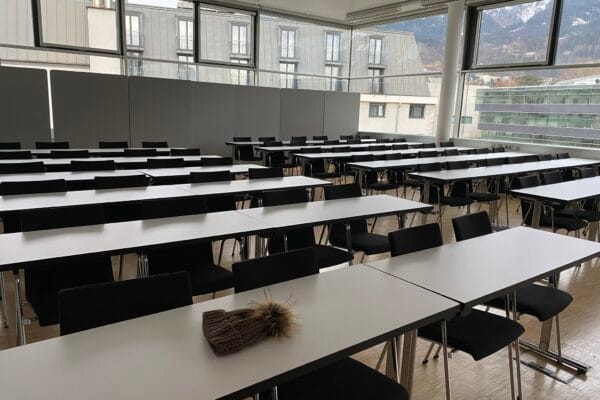
NAME:
MCI - Aula 301
BUILDING:
Management Center Innsbruck
FLOOR:
3
TYPE:
Lecture Room
CAPACITY:
66
ACCESS:
Only Participants
EQUIPMENT:
Blackboard, Beamer, Flipchart, PC, Sound System, WLAN (Eduroam), Handicapped Accessible
In the last century, approximately 80% of global agrobiodiversity has been lost. Plant agrobiodiversity includes traditional crop varieties (landraces) that hold significant agricultural, cultural, and historical value. However, many of these landraces remain poorly or entirely uncharacterized, limiting their potential for conservation and utilization. This lack of scientific data hinders the study and valorization of landraces, which could play a crucial role in developing high-quality, low-environmental-impact agri-food chains. Italy is particularly rich in agrobiodiversity, with numerous landraces thriving in hilly and sub-mountain areas where traditional farming practices contribute to maintaining genetic diversity. In this context, the Lombardy, one of most important Italian region, hosts numerous yet unknown traditional bean cultivars.
The aim of this work was the scientific characterization of seventeen unknown Lombardy’s bean landraces (P. vulgaris and P. coccineus)to increased research effort to support understanding of the agrobiodiversity role in mountain agri-food systems. All landraces’ cultivars presented similar or better nutritional and phytochemical characteristics than the commercial ones. Many cultivars, particularly those with pigmented seeds, demonstrated high levels of functional molecules and antioxidant activity. The CRC Ge.S.Di.Mont research group focused specifically on “Copafam,” a runner bean landrace typical of the Brescia Alps and Prealps, further investigating its phytochemical and nutritional properties. The results showed that Copafam is rich in dietary fiber (34.83 ± 2.48 g/100 g dw) and protein (21.93 ± 0.41 g/100 g dw), as well as polyphenols (121.36 ± 5.31 mg GAE/g dw), flavonoids (6.51 ± 0.17 mg/kg dw), and anthocyanins (28.11 ± 0.16 mg Cy3 G/kg dw).
The high concentration of secondary metabolites and antioxidants found in Copafam and in other traditional beans highlights their potential for innovative and functional food production, promoting human health and well-being. Additionally, integrating landraces into genetic crop improvement programs could enhance the resilience of mountain agroecosystems, helping them mitigate the adverse effects of climate change while supporting local farming communities.
The study and promotion of landraces represent a strategic opportunity for fostering smart and sustainable development in marginal and mountainous regions ensuring the conservation of genetic resources.
